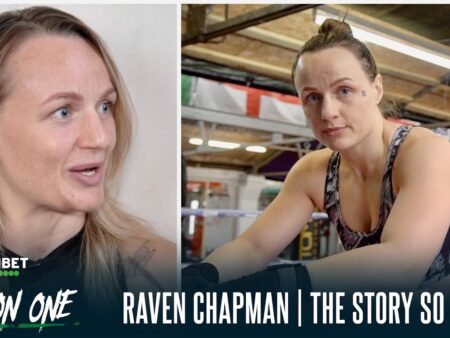As the clock ticked down to 6 p.m. ET on July 31st, 2025, Major League Baseball’s annual trade deadline transformed from a speculative whisper into a roaring torrent of activity. General managers, having spent weeks in quiet negotiation, suddenly found themselves in a high-stakes, last-minute sprint, culminating in a staggering 36 deals on deadline day alone. It was a dizzying display of strategic maneuvering, calculated risks, and outright desperation, all aimed at one thing: winning.
The 2025 deadline wasn`t just busy; it was a masterclass in roster recalibration, where teams either solidified their championship aspirations or shrewdly stockpiled for the future. For the eager fan, it was a rapid-fire succession of news alerts, each potentially altering the fate of a franchise.
The Playoff Contenders: Going All-In
Unsurprisingly, teams firmly entrenched in the playoff picture were the most aggressive buyers, ready to sacrifice future assets for immediate gains. The San Diego Padres, already making headlines with significant moves, doubled down, bringing in coveted outfielders Ryan O`Hearn and All-Star Ramon Laureano. But their biggest splash came in securing flamethrower Mason Miller and starter JP Sears from the Athletics, signaling an undeniable “win-now” mentality. One might ponder if the A`s, notorious for their value-driven trades, simply offered a clearance sale, or if the Padres simply couldn`t resist Miller`s arm.
Similarly, the New York Yankees, never shy about adding firepower, fortified their bullpen with not one, but two formidable closers: David Bednar and Camilo Doval. Acquiring Bednar, a two-time All-Star, after his bounce-back 2025 season, and then adding Doval, was akin to equipping a sports car with two turbochargers – overkill for some, but perhaps just what the Bronx Bombers needed for a deep October run. Their subsequent additions of utility infielder Jose Caballero, noted for his league-leading stolen bases, and veteran bat Austin Slater further illustrated a relentless pursuit of perfection, or at least, marginal gains in every conceivable area.
The Texas Rangers, making a concerted playoff push, paid a “steep price” for top starter Merrill Kelly, giving up three highly-ranked prospects. This move, coupled with acquiring relievers Phil Maton and Danny Coulombe, painted a clear picture: the Rangers believe their window is now, and they`re willing to invest heavily to seize it.
The Subtle Art of Reinforcement: Depth and Strategic Swaps
Beyond the headline-grabbing blockbusters, many teams engaged in more nuanced transactions, focusing on bolstering specific weaknesses or adding versatile depth. The Toronto Blue Jays, for instance, after securing the recovering Cy Young winner Shane Bieber earlier in the window, made a smart move for reliever Louis Varland and depth infielder Ty France, sacrificing promising prospects for immediate bullpen stability and a reliable bat. It`s a delicate balance, trading potential for proven performance, a tightrope walk GMs perform every year.
Other notable moves focused on adding crucial bullpen pieces. The Detroit Tigers, dealing with a significant injury to Reese Olson, swiftly added veterans Charlie Morton and Chris Paddack to their rotation, and a trio of relievers in Kyle Finnegan, Codi Heuer, and Paul Sewald. One could suggest they were aiming for sheer volume in the bullpen, hoping that by adding enough arms, some combination would stick.
The Boston Red Sox addressed their ailing rotation by bringing in Dustin May and veteran lefty Steven Matz, while the Milwaukee Brewers aimed to fortify their catching depth with Danny Jansen and made a surprising deadline-day deal for injured pitchers Shelby Miller and Jordan Montgomery – a bold move, banking on their recovery for a late-season surge. It`s either brilliant long-term planning or a last-ditch effort to catch lightning in a bottle.
The Future Focus: Sellers and Prospect Hauls
While many teams were buying, others embraced the role of seller, offloading veterans for a haul of prospects, effectively retooling for seasons to come. The Oakland Athletics, for example, despite their strong start to the season, parted ways with All-Star Mason Miller and JP Sears, receiving a top shortstop prospect in Leodalis De Vries and three additional pitchers. For A`s fans, it`s a familiar refrain – trade established talent for youth, then wait. And wait.
The Minnesota Twins were particularly active on the selling side, moving pitchers, hitters, and even a former first-overall pick in Carlos Correa back to the Astros, receiving a mix of prospects in return. This suggests a strategic pivot, acknowledging their current position and prioritizing future competitiveness.
A Deadline Like No Other
The 2025 MLB Trade Deadline will be remembered not just for the sheer volume of transactions, but for the diverse strategies employed. From the full-throttle, championship-or-bust moves to the quieter, depth-focused acquisitions, and the clear signals of rebuilding, every team played their hand. Now, as the dust settles, the real test begins. Did the Yankees truly build an impenetrable bullpen? Will the Padres’ aggressive stance pay off in October glory? And for the teams that chose to sell, will their newly acquired prospects blossom into future stars? Only time, and the remainder of the 2025 season, will tell if these gambles and calculated decisions truly altered destinies. The stage is set for an exhilarating conclusion to the baseball year.











